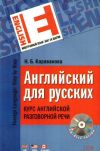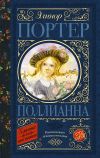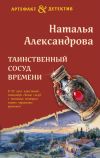
Автор книги: Елена Глушенкова
Жанр: Иностранные языки, Наука и Образование
сообщить о неприемлемом содержимом
Текущая страница: 4 (всего у книги 31 страниц) [доступный отрывок для чтения: 9 страниц]
Unit 4
Theory of Supply
Грамматика :
1. Временные формы глаголов и причастий I и II ( повторение)
2. Бессоюзное присоединение определительных придаточных предложений
Задание на дом № 1
1. В разделе «Грамматика и словообразование» проработайте § 10.
2. Переведите следующие предложения на русский язык, обращая внимание на бессоюзное присоединение определительных придаточных предложений.
The European economy of the 2020s will be very different from that of the Europe we have known for the last decades.
Higher incomes have much more influence on the way people eat (more meat, less bread) than on the amount they eat.
With changed prices the consumer has to change the quantities he demands if he is to maintain utility at the same level.
Real income is the amount of the goods and services a consumer can buy with his money income.
A consumer is a person who consumes the products and services he buys.
The price at the time the good is ready for marketing may be different from the price at the time the decision to produce it was made.
3. Переведите текст Theory of Supply и отработайте его чтение.
4. Найдите в тексте:
определительные придаточные предложения, присоединенные к главному предложению без союзного слова (последний абзац);
причастие II в постпозиции (второй абзац);
причастные обороты (третий, четвертый, девятый абзацы);
одиночные причастия, употребленные в качестве левого определения к существительному (второй и седьмой абзацы).
TEXT
Theory of Supply
The theory of supply is the theory of how much output firms choose to produce. The principal assumption of the supply theory is that the producer will maintain the level of output at which he maximizes his profit.
Profit can be defined in terms of revenue and costs. Revenue is what the firm earns by selling goods or services in a given period such as a year. Costs are the expenses which are necessary for producing and selling goods or services during the period. Profit is the revenue from selling the output minus the costs of inputs used.
Costs should include opportunity costs of all resources used in production. Opportunity cost of a commodity is the amount obtained by an input in its best alternative use (best use elsewhere). In particular, costs include the owner's time and effort in running a business. Costs also include the opportunity cost of the financial capital used in the firm.
Aiming to get higher profits, firms obtain each output level as cheaply as possible. Firms choose the optimal output level to receive the highest profits. This decision can be described in terms of marginal cost and marginal revenue.
Marginal cost is the increase in total cost when one additional unit of output is produced.
Marginal revenue is the corresponding change in total revenue from selling one more unit of output.
As the individual firm has to be a price-taker[6]6
to be a price-taker – зд. принимать сложившиеся на рынке цены.
[Закрыть], each firm's marginal revenue is the prevailing market price. Profits are the highest at the output level at which marginal cost is equal to marginal revenue, that is, to the market price of the output. If profits are negative at this output level, the firm should close down.
An increase in marginal cost reduces output. A rise in marginal revenue increases output. The optimal quantity also depends on the output prices as well as on the input costs. Of course, the optimal supply quantity is affected by such noneconomic factors as technology, environment, etc[7]7
etc. – и так далее, и тому подобное.
[Закрыть].
Making economic forecasts, it is necessary to know the effect of a price change on the whole output rather than the supply of individual firms.
Market supply is defined in terms of the alternative quantities of a commodity all firms in a particular market offer as price varies and as all other factors are assumed constant.
Словарный минимум к тексту
output n продукция; объем производства
profit и прибыль, доход
in terms of – в смысле; с точки зрения; в отношении; в переводе на
in terms of money – в денежном выражении
revenue и доход
marginal revenue – предельный, маржинальный доход{дополнительный доход, который получит производитель в результате продажи одной дополнительной единицы продукции)
costs – издержки, расходы
marginal costs – предельные, маржинальные издержки{дополнительные издержки при производстве дополнительной единицы продукции)
opportunity costs – альтернативные издержки (выгода, упущенная вследствие неиспользования экономического ресурса в наиболее доходной из всех возможных сфер и отраслей хозяйства)
earn v зарабатывать; приносить доход; быть рентабельным
expenses n затраты, издержки
use v пользоваться, использовать; употреблять
use n 1. употребление, применение; 2. польза
include v (smth in smth) включать {что-л. в состав чего-л.)', содержать
to be included in smth включаться во что-л., являться частью чего-л.
commodity n товар; продукт, предмет потребления
amount n количество; величина; сумма; объем
alternative adj альтернативный; другой
elsewhere adv где-нибудь в другом месте
in particular – в особенности, в частности
own v владеть, обладать, иметь
own adj собственный, свой собственный
owner n 1. собственник; 2. владелец
run (ran, run) v (smth) руководить; управлять(предприятием, учреждением)', вести{дело)
business n предприятие; фирма
receive v получать
total adj полный; общий
corresponding adj соответственный; соответствующий
offer v (smth to smb) предлагать (что-л. кому-л.)
Аудиторная работа № 1
5. Назовите русские эквиваленты следующих интернациональных слов:
organization, elastic, lord, standard, person, personal, million, to circulate, to calculate, calculation, typically, equivalent, real, to cultivate, quota, syndicate, activity, migration
6. Определите, к какой части речи относятся следующие слова, и переведите их на русский язык, не пользуясь словарем:
1) to limit, limited, unlimited, limit, limitation
2) to change, changing, changed, unchanged, change
3) to affect, affected, unaffected, affecting
7. Назовите предложения, где пропущен эквивалент слова который. Переведите их на русский язык.
1. Supply is the amount of a good that will be offered in the market at a certain price and time.
2. Firms' decisions about how much to produce depend on the costs of production and on the revenues they receive from selling the output.
3. The amount of output firms want to offer depends on costs and revenues.
4. Inputs are the factors of production (land, labour and capital, including materials) that are put into a business for producing output as a commodity or a service.
5. The economist is interested in the role of costs and profits affecting the firm's supply decisions and the allocation of resources for producing particular goods.
6. There are a lot of factors in agriculture that must be assumed as risks by the farmers.
8. Переведите следующие словосочетания на русский язык. Обратите внимание на значения причастий и на интернациональные слова.
a business owned and run by one or more members of the same family; financial analysis using statistical information about the past and examining present market tendencies; limited resources; supplying farm commodities; commodities supplied by individual firms; men running their own businesses; commodities offered at the market; decisions following the economic analysis; goods consumed; choice restrictions imposed by prices
9. Замените русские слова в скобках их английскими эквивалентами.
1. For each output level (производственные издержки) depend on technology.
2. The concepts (понятия) of (предельных издержек) and (предельного дохода) are of great (польза) for economic analysis, supply analysis, (в особенности).
3. For each possible (объема производства) level, a firm will want to know how much it will cost to produce this (продукцию) and how much (дохода) will be (заработано) by selling it.
4. Land is one of the factors of production called natural resources (включая) also minerals, water, weather, etc.
5. The concept of (альтернативных издержек) is of great importance in economics because it affects every decision in which limited resources and a choice between (альтернативными использованиями) play their role.
6. The financial capital may be used (где-нибудь еще) and bring in profit.
Задание на дом № 2
10. Раскройте скобки и употребите глаголы в соответствующей форме. Переведите предложения на русский язык.
1. Mixed economy is an economic system in which some industries (to own) by the state and others (to own) by private persons and firms.
2. When supply is increased, a larger amount (to offer) at a given price.
3. The supply of agricultural products cannot be (to increase) within a very short period of time.
4. The aim of the Organization of Petroleum (to export) Countries (OPEC) (to found) in 1961 is to maintain a standard price for oil and, if necessary, to limit output. In 1973 the OPEC suddenly (to begin) to use its influence (to raise) the world price of oil so that by the end of 1974 the price (to rise) three times in most (to import) countries. It (to increase) many times since then.
5. Marginal revenue is the additional revenue (to earn) by a producer from selling one more unit of his product.
6. Money supply is the total amount of money (to hold) by all persons and organizations in a country at a particular time.
7. The revenue (to obtain) from selling output depends on the demand.
8. Landless farmers, that is, farmers (to own) no land, have to cultivate land (to own) by others.
9. Economists use the word «capital» for goods not entirely (to use) up in the production process, during a particular period. Electricity is not «capital» as it (to use) entirely in the production process.
10. With less risk of a fall of price between the time decisions (to make) and commodities (to sell), producers will use additional inputs.
11. Supply (to depend) on output prices and input prices. An increase in the price of an input (to result) in a reduced use of that input. A reduction in the price of an output (to have) the same effect as an increase in the price of input, that is, a reduced use of input. The input use (not to change), provided output and input prices (to rise) or (to fall) by an equal percentage. Thus, the effect on output of a decrease in product prices (can) (to be neutralized) by an equal percentage decrease in input prices. Sometimes the prices of inputs and outputs (to change) together. For example, a fall of livestock product prices (to reduce) the demand for feed grains. This (to lead) to a fall in the price of feeds, that is, the price of inputs.
11. a) Вставьте пропущенные предлоги, где это необходимо.
1. The growth… output… person rather than the growth… total output is… greater importance… an economy.
2. The companies selling consumer goods recognize the importance… consumer preferences; they spend over $40 billion… a year… the US… advertising trying to direct consumer preferences… their own products.
3. An increase or a decrease… total revenue may follow… a price rise and a decrease… the quantity produced accompanying it. The effect depends… which change is larger – the change… price or the change… the quantity produced.
4. After a particular market is defined… terms… its product and its geographic area, the economist can study the workings… demand and supply… that particular market.
5. As the price… a good increases, consumers can buy less… all goods, including… the good whose price has risen.
6. Opportunity costs and amounts paid… all resources are included… total costs.
7. The output… beer… Russia's largest beer maker, Baltika Brewery, grew… 30 percent… 1999… the previous year.
8… 1999, industrial production… Russia increased… 7.9 percent but the output… agricultural sector decreased… 0.6 percent compared… 1998 level.
9. Every field, economics… particular, has its «schools» and groups. «Liberal» economists believe… market system opportunities. But they also believe… government support and regulation… an economy. «Classical liberals» or the «Chicago Group» rely… people's private choices as the rational basis… the economic system. «Radical» economists, including… Marxists and other critics, believe that free-market capitalism must result… depressions and mass unemployment. They assume that governments must ran… all economic units and make all economic decisions.
б) Кратко охарактеризуйте три основные школы экономической мысли, о которых говорится в пункте 9.
Аудиторная работа № 2
12. а) Ответьте на вопросы к тексту Theory of Supply.
1. What is the principal assumption of the supply theory?
2. What is the difference between profit and revenue?
3. What is included in costs of production?
4. How do firms get maximum profits?
5. When are profits the highest?
6. When should firms close down?
7. What is the relationship between marginal revenue, marginal cost and output?
8. What is market supply? What is market supply important for?
б) Подумайте и скажите:
1. Why is it necessary to know the effect of a price change on the whole output rather than the supply of individual firms for making economic forecasts?
2. Can you give an example of technology influencing the quantity supplied?
13. Раскройте скобки и выберите подходящее по смыслу слово из предлагаемых вариантов.
1. Farmers may (own / earn /run) more revenue from a bad harvest (урожай) than from a good harvest.
2. A rise in the income of consumers will typically result in an equivalent increase in (corresponding /total /alternative) consumer expenditure.
3. Statistics show the greatest increase in the number of jobs in the American non-production sector, among government workers (in terms of / elsewhere /in particular) today.
4. Don't forget to calculate the (marginal cost /costs /opportunity cost) of the man's labour, that is, the money that he could (own /earn /offer) by working elsewhere.
5. In Marxist theory, proletariat is the social class of workers who have to sell their (corresponding /own /total) ability to work.
6. If we want to understand how firms make output decisions, we must analyze how they determine (revenues /output /amounts) snd(commodities /costs /profits).
14. Составьте предложения из двух подходящих по смыслу частей.
1. Market demand is
2. An improvement in technology is a change that
3. Profits are
4. As long as the total demand and the total supply of the commodity remain equal,
5. Part of a company's profits is put back into the business rather than
6. Examining how revenues and costs change with the level of output produced and sold,
7. With inflation, people have to increase expenditure because
8. Profit depends on
9. Opportunity cost is the amount
a. revenues minus costs.
b. the firm can select the output level maximizing its profit.
c. paid out as dividends.
d. the equilibrium price will remain unchanged.
e. makes it possible for firms to produce more goods with the same amount of resources as before.
f. how much the amount received is greater than the amounts paid.
g. the total demand from all consumers.
h. the old level of expenditure in money terms now buys a smaller quantity of goods.
i. an input can obtain in its use elsewhere.
15. Переведите следующие предложения на русский язык, обращая внимание на перевод причастий I и II.
1. The syndicate controls prices and output and, allotting (отводить, выделять) quotas to its members, it divides the market demand among them.
2. Boom is a period of increased business activity when a rising demand for all commodities results in increased industrial production.
3. If free migration between countries is allowed, people from poor countries will be able to go elsewhere looking for higher incomes.
4. People working in their own businesses should calculate the cost of their own time spent in running the business.
5. Varying input, the firm can vary output.
6. The work of a farmworker and the work of a nurse are very different, but both are measured in terms of payment received.
Задание на дом № 3
16. Переведите предложения на русский язык, обращая внимание на слова и словосочетания из словарного минимума к тексту Theory of Supply.
1. The aim of macroeconomics is to examine and explain economic facts for the total nation, such as the total money supply, production, consumption, etc.
2. Profit is the revenue from selling the output minus the costs of inputs used.
3. For each level of output, the marginal costs are lower as the input price decreases.
4. A business needs some financial capital to start the business before the corresponding revenue is earned.
5. If bad harvests raise farmers' revenues and good harvests result in a fall in agricultural prices and farmers' revenues, you may now be thinking why farmers do not get together and restrict their supply thus increasing revenues.
6. Opportunity costs should be counted for labour and financial capital used.
7. European firms (and some from the United States and elsewhere) cooperate with East-European firms.
8. A change in the price of input, price of alternative output, technological factors, and the number of firms will result in a market supply change.
17. Переведите предложения на английский язык.
1. Рыночный спрос – это общий спрос на товар в обществе.
2. Не все партнеры в деле должны принимать активное участие в управлении фирмой.
3. Нелегко рассчитать доход, издержки и прибыли для большого предприятия.
4. Фермер – это человек, который владеет и управляет фермой.
5. Когда цена поднимается выше предельных издержек, каждый производитель хочет производить больше.
6. Даже при нулевой выработке фирма должна оплачивать некоторые расходы.
7. Издержки должны включать альтернативные издержки всех ресурсов, используемых в производстве.
18. а) Замените подчеркнутые части предложений причастными оборотами. Про изведите в этих предложениях все необходимые изменения.
Opportunity cost is a fundamental concept of economics. Opportunity cost is the economic cost of using scarce resources in terms of the alternatives elsewhere. This concept is of value for all economic choices. In every choice the person has to take one action rather than others. For each choice, the person compares the benefits and costs of each alternative and tries to get the maximum benefit.
Benefits are usually clearly seen. The person can feel satisfaction because he buys a car, a meal, a concert, or even a year at college. But costs are more difficult to see. The true economic cost – the opportunity cost – may be not the same as the simple expression in money terms because there are other real costs.
The other real costs are often hidden, or indirect. They include things, material and immaterial, the person cannot get because he gets something else.
For example, with just two days before exams, you can only study economics and raise your course grade from В to A. or only chemistry and raise that grade from С to A. The opportunity cost of an A in chemistry is getting a В in economics rather than an A.
Your parents bought a house for $20,000 some years ago. They can sell it for $45,000 now. The cost of their staying in the house now is $20,000. The opportunity cost is $45,000. "four parents stay in the house and do not get $45,000.
б) Напишите семь вопросов к тексту.
в) Кратко передайте содержание текста по-английски, используя причастные обороты.
Аудиторная работа № 3
19. Заполните пропуски следующими словами и словосочетаниями в соответствующей форме:
opportunity cost, corresponding, profit, owner, to own, to use (2), alternative, expenses, own, marginal costs, marginal revenue
1. A free market is a market in which buyers and sellers are free of intervention and control and are able to determine the market price… to supply and demand.
2. A person is economically free if he can do what he wishes with his… property, time and effort.
3. At profit-maximizing level has to be equal to
4. The personal sector in a mixed economy is that part of the economy that is… and controlled by private persons and private businesses.
5. The main aim of all firms is the same: to maximize… though there may be… aims as well.
6. Under feudal system the king was the… of all land, and his lords could… his land. The system came to an end when the peasants (крестьяне) were paid for their work and paid rent for the land they…
7 is the amount lost by not using the resource (labour or capital) in its best alternative use.
8. Profit is the difference between business income and….
20. ЗАПОМНИТЕ существительные amount, number, quantity, которые очень близки по значению, но между которыми имеются некоторые различия.
Существительное amount в значении сумма, количество чего-либо употребляется, в основном, с неисчисляемыми существительными, например: amount of work /information /coffee /money. С исчисляемыми существительными оно употребляется, только когда речь идет о большой общей сумме предметов, образующих целое, например: the total amount of goods produced, a maximum /minimum amount of goods, a large amount of potatoes.
Существительное number в значении номер служит для различения и подсчета предметов, например: the cheque number, the banknote number. В значении количество, число number употребляется с исчисляемыми существительными, например: I don't know what the number of pages in this book is.
A number of означает ряд, несколько, например: a number of goods / producers. После такого словосочетания глагол стоит во множественном числе: A number of tests were made by the consumer society last month.
Существительное quantity употребляется как с исчисляемыми, так и с неисчисляемыми существительными, например: a small quantity of gas, a large quantity of goods. В отличие от number, существительное quantity означает вес и объем, а не численное количество. Оно не употребляется с такими существительными, количество которых не может быть выражено в весе или объеме, например: consumer, factory.
Переведите русские слова в следующих предложениях.
1. Last year there was an increase in the (количества) of gas produced.
2. (Число) of sellers in the market has decreased.
3. Almost the same (количество) of coffee was exported last year as the previous year.
4. (Ряд) problems arise when a new company is set up.
5. When there is shortage, sellers can charge (назначать) the maximum (сумму) for their goods.
6. They supply the same (количество) of the commodity to this customer every week.
7. The (сумма) he puts in the bank every month is the same.
8. (Число) of their customers has increased this month.
9. It is cheaper to buy goods in large (количествах).
10. This big store has (ряд) suppliers.
11. The economist calculated the total (сумму) of the expenditure.
12. There is a shortage of the (количества) demanded of the goods.
13. Write down the banknote (номера) you paid him for his services.
21. а) Раскройте скобки и употребите глаголы в соответствующей форме.
Neoclassical economics (not to be) a school of thought (мысль) but a number of subschools of thought (to form) by economists (to follow) and (to develop) the ideas of such masters as Alfred Marshall in England, Leon Walras in France and Carl Menger in Austria. What all these subschools (to agree) upon was the importance of individual utilities and constraints for coordinating markets and prices.
In 1890 Marshall in his Principles of Economics (to show) how prices for commodities (can) (to be explained) by supply and demand in the context of firms (to struggle) to survive (выжить) within industries.
Walras and his followers in France and England (to be interested) in the effect of supply and demand on market pricing (ценообразование). Walras (to examine) the mathematical conditions under which all markets (can) (to be) in equilibrium at the same time.
Among Austrians, the important task of economic study (to be) to sort out (отобрать) separate units of economic activity and then to analyze them in terms of supply and demand forces (to work) through the decisions (to make) by individuals.
б) Ответьте на вопросы к тексту.
1. What were neoclassical economists mainly interested in?
2. What subschools and names are mentioned in the text?
22. Прочитайте текст без словаря. Найдите интернациональные слова, имеющие похожую форму и значение в английском и русском языках. Ответьте на вопросы, следующие за текстом.
Price Elasticity of Demand and Supply
There is a relationship between demand and price. How much demand for a commodity is affected by a change in price is called elasticity of demand. If a small change of price results in a large change in demand, the demand is called elastic, if the demand changes only a little, it is called inelastic. The price elasticity of demand coefficient is negative as demand usually falls with a rise in price.
The price elasticity of supply shows the percentage change in the quantity supplied resulting from a one-percent change in price.
As an increase in the quantity supplied is normally a result of a rise in price, the coefficient is usually positive. We have a "0" (zero) elasticity when a price change results in no quantity supplied change. This is called a perfectly inelastic supply. Provided the elasticities vary between zero and one, the supply is called inelastic. With coefficients greater than one, the supply is called elastic. The percentage change in quantity is larger than the corresponding percentage change in price.
Agricultural supply is mostly inelastic because of the high proportion of such inputs as land, buildings, and machinery. The elasticities of agricultural commodities (potatoes, wheat, fruits, eggs, milk) vary greatly. Because of increasing specialization of production of farm animal products, in particular, elasticities for such commodities as pigs or broilers have decreased in recent years.
Which demand is called elastic?
In what units is elasticity of supply shown?
Why is the price elasticity of demand coefficient negative and the corresponding coefficient for supply positive?
What supply is called inelastic?
What is the difference between the inelastic and the perfectly inelastic supply?
Why is agricultural supply usually inelastic?
What is the tendency of agricultural supply development?
Правообладателям!
Данное произведение размещено по согласованию с ООО "ЛитРес" (20% исходного текста). Если размещение книги нарушает чьи-либо права, то сообщите об этом.Читателям!
Оплатили, но не знаете что делать дальше?





































